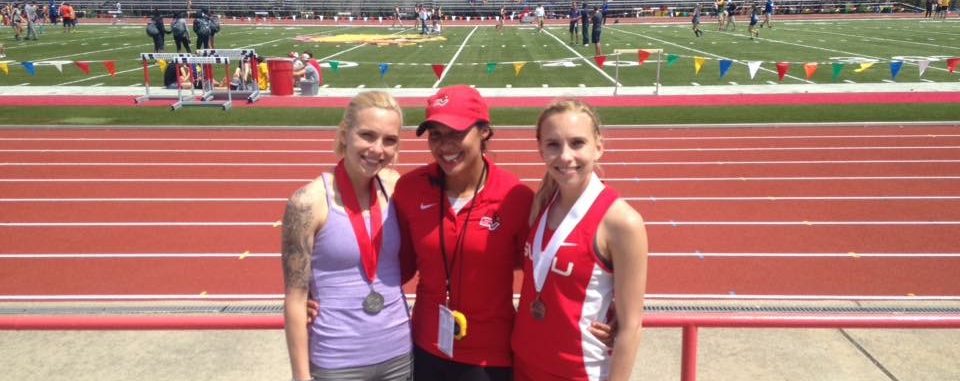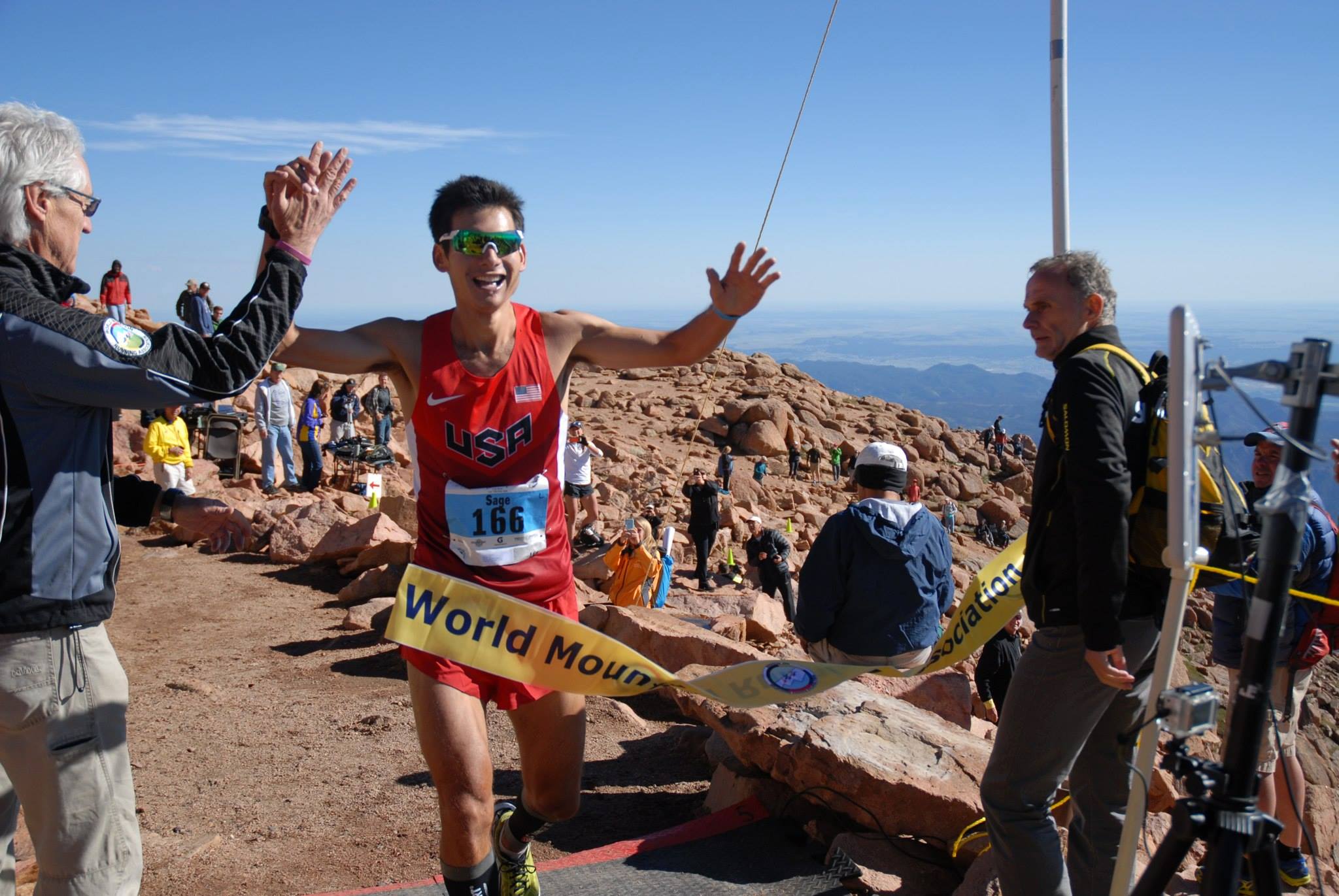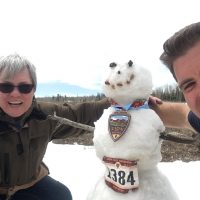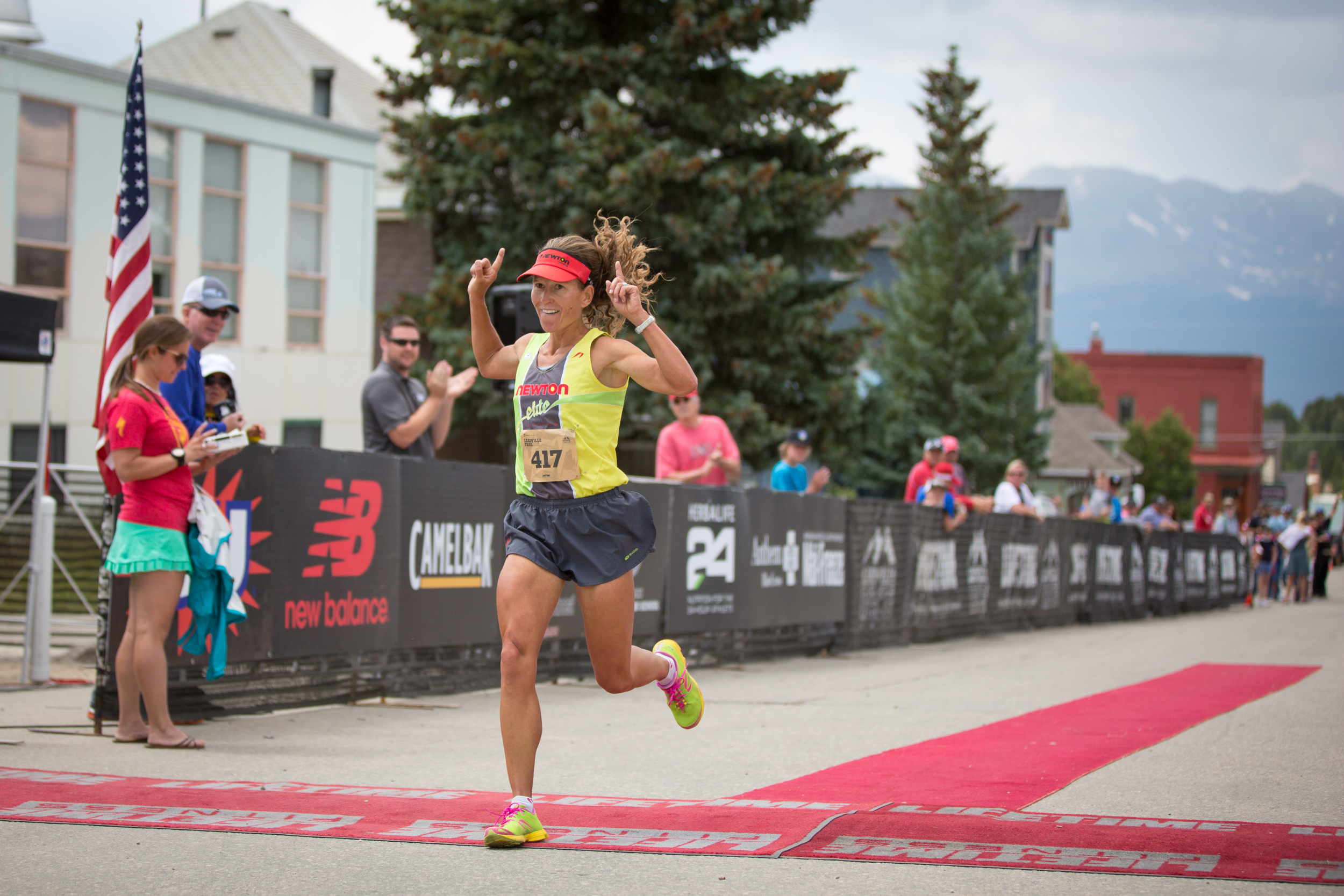In the final installment of our series focusing on the fortunes of the Saginaw Valley State University women’s distance and middle-distance running team, we interview head coach Angelina Ramos. After giving such a great account of her athletes’ experiences in previous weeks, we now ask Angelina about her own running career, what inspired her to take up coaching, and how she incorporated activacuity into her practice schedule to bring the best out of her team on race day.
Can you tell us about your running career?
I was a high school 400m/800m specialist, getting on the podium for the state championship relay teams in 4 x 400m and 4 x 800m several years in a row. I went to high school in New Fairfield, Connecticut, where I was coached by Tim Murphy. He had a knack for militaristic training but motivated athletes in practical ways and built mental toughness. I went on to run NCAA Division I cross-country and track & field at Florida State University, one of Head Coach Bob Braman’s first recruiting classes at FSU as he was relatively new in his head coaching role at that time. At Florida State, I grew in my knowledge of distance running during cross-country season training and specialized in middle distance competition on the track: 800m-1500m.
I encountered many injuries and illnesses (stress fractures, anemia, etc.) during my first two-and-a-half years at Florida State, but found success once I became consistent with training and avoided injury for longer than six weeks at a time. I lost a lot of confidence when coming back from injury and not being able to run times comparable to those at my peak in high school, and grew frustrated with my running. The experience heightened my interest in the role of nutrition, strength training, injury prevention and more, and fueled a passion that was growing within me. I was studying Exercise Science/Double English Writing with a pre-med track and focus on Sports Nutrition, while interning for sports specialists and physical therapists during my summers in Boulder, Colorado, as well as writing for Sports Illustrated, Trackshark.com, and Bleacher Report. But my favorite part was covering cross-country and track collegiate meets as well as interviewing athletes, and being able to articulate and showcase their stories.
My running took off when Coach Braman brought in Karen Harvey to lead the women’s team, which began to shine on the conference, regional, and national stage. Under Coach Harvey, it seemed that almost everyone on the team was reaching new heights and performance levels. She was a professional at delivering constructive criticism and being brutally honest, yet was equally enthusiastic when you were able to translate the changes in technique, form, execution of workouts and race strategies that she was asking for into a personal best on the track or cross-country course. Coach Harvey was detail-oriented in every sense of the word and gave us a level of attention and guidance we’d never had before. We responded readily to someone investing that much time in us and micromanaging every aspect of how we trained.
I was sad when my fifth year of collegiate running ended because it meant I had to leave that coaching structure and support system. I left Florida State knowing whole-heartedly that positive coaching was something I wanted to provide to others as a way of giving back a gift that had been given to me. I continued to train competitively under Olympic Trials qualifier James Hatch, an 800m-1500m specialist at Arkansas and former Nike-sponsored athlete turned coach upon retirement. I coached over 15 different clubs in Colorado throughout the summers and winters between NCAA competition, and at high school level while pursuing my master’s degree at Metro State University and for a few years afterward. Now I’m in Michigan where I have more coaching responsibility and freedom to influence the women’s program, culture, training, and racing plans as I see fit within a budget set by our Head Coach.
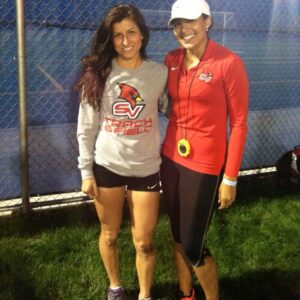 What is your current role at SVSU?
What is your current role at SVSU?
I am the women’s cross-country coach, and in track and field, I’m the women’s distance and middle-distance coach. I coach 18 female athletes during cross-country, indoor, and outdoor track season, though it’s a year-round job if you want to foster strong athlete/coaching relationships with your athletes. I am adjunct faculty in the department of communication and teach public speaking and fundamentals of communication on Tuesday/Wednesdays 7-10pm. I am fortunate to teach many NCAA student-athletes in those evening classes (some of my cross-country/track athletes included) because the time doesn’t conflict with any of the NCAA sports practices.
What do you love best about coaching, and what skills do you bring to the relationship with your athletes?
I love helping individuals improve from one level to the next, helping them grow mentally, physically, physiologically, and psychologically in their confidence, self-esteem, and their belief that they can develop further. I enjoy seeing the moment where it clicks for them in training and seeing it all finally come together at race-level.
My leadership strengths are individualization, relatability, empathy, and seeing the potential within athletes of who they could become in a loving, nurturing environment, setting that expectation early on and letting them grow into it. I love helping athletes improve their overall strength, technique, and form, helping them to see the progress made over time and highlighting how their agency achieved this better, faster, stronger, healthier state of running.
The essential skill that I bring to the relationship with my athletes is individualization. I get to know each of my athletes very well and modify how I motivate and communicate with them. I adapt their injury prevention routine, mileage, and strength training to what they need at that particular point in time. I never break a person down unless I can build them back up in that very moment—if I’m going to give constructive criticism, I will simultaneously provide the key to success at improving in that area and teach them. I never give false praise; I never embarrass my athletes, but I do enforce that if we are going to do something, we do it fully and try to better our technique, form, and efficiency every time. We train with a purpose. Sometimes the purpose of that day is to recover—it means sometimes slowing them down when they haven’t learned how to read or develop a relationship with their body yet, and their ego says to run with the older girls! It means teaching them that sometimes when I give them a time, it’s a range, and the point is to get the purpose of the workout rather than fighting yourself to run two seconds faster.
Whether I’m instructing them in the weight room or on how they executed an interval in practice, If I don’t know how to teach something to my athletes, I find someone who does and bring them in. I don’t always have to be the only expert they hear from, in fact, I think it’s healthy for them to learn holistically from a variety of voices and experiences. Coaching holistically is vital to me because I want to know them as people, not just as athletes. They aren’t just numbers; they’re individuals with names who possess unique goals, fears, and strengths that I can amplify to obtain those objectives. I look at how they can improve overall at stress management, at nutrition, at making new friends, at finding confidence when racing at a new level, at navigating a new distance event, all of it.
Can you share some of the highlights that you saw in your athletes from using activacuity?
The first thing I noticed was the buy-in to acknowledging that racing AND training are not only physical, but they are mental too; that it’s possible to self-sabotage yourself or be struggling with areas mentally even if you are thriving physically. Structuring activacuity sessions into practice conveyed the message to my athletes that I cared about their mental state as much as their physical state, and that being “tough” mentally when racing is not a fixed characteristic that comes easily to some and not others. In this way, it impacts the prevailing culture by showing them that attributes like bravery, courage, building self-esteem, generosity—all have an equally important place in a sporting world typically dominated by numbers and statistics.
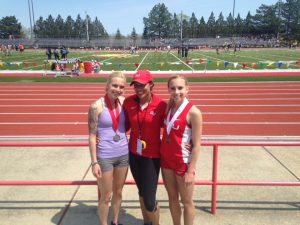
My women’s cross-country team has an average GPA of 3.8—they are very high achievers, and many of them take on so much that they forget to stop and relax sometimes. After listening to Focus: Thinking Clearly #11, I highlighted how you couldn’t ask your body to relax in a race if “relaxing” is something you never do. My message became that we have to practice relaxing and should enjoy relaxing, and this feeds into enjoying not just running, but everything else in life because we approach it from a place of peace and calm. Some of my athletes loved having a mantra, while others said that it didn’t work for them quite so much, but it allowed each to try different techniques. They could approach mental training like a scientist in the sense of discovering WHICH technique works best for them to build confidence, transforming that belief into 90% of their repeated thoughts.
What did you learn from the process of visualization with your athletes that you will do differently for the upcoming season? How frequently did the team use activacuity, and how did you successfully integrate the app into the training schedule?
I learned that visualization is less effective if they’ve just come out of 4-5 hours of class and are so antsy from sitting all day, the last thing they want to do is be still for 20 more minutes. At this point, they just want to MOVE and jump and play and run! Even though I love to get them focused on just their breathing, it’s hard to do it outside in noisy places where it’s hard to hear. I found it way more useful after practice than before—they love to run and often are excited to get to the running part or are nervous anticipating a hard workout!
This semester, I did a better job picking a non-workout day earlier in the week when we typically have more time, or on Fridays before a Saturday race when my athletes could fully engage, as well as a weekend day. Last year, I used activacuity with the team about twice a week, but often had to move the day around based on the changing nature of our travel and competition schedule. Sometimes it was just once a week because they had midterms or other commitments which meant they had to leave practice earlier.
I certainly felt that it worked better once I bought a speaker that connects to my phone to enable group sessions with everyone laying down on their yoga mats listening together. But having the app on their phones is great for when they want to supplement the mind training we do in practice on an individual basis before a race, during high-stress periods, or to practice relaxing in the evenings. The team is especially receptive to visualization the nights before and the morning of big races, as well as after practice while their heart rate comes back down, but we only do it for 10-15 minutes because they start to get hungry quickly after a three-hour training session!
Would you recommend activacuity to other university/college teams and their athletes?
Definitely. Having a sports psychologist or counselor on staff is a must for every university team, but the thing is, they probably wouldn’t travel with athletes to meets or competitions, and may not be able to give everyone the individual attention or frequency of mental training that they need. So activacuity becomes a structured form of meditation, visualization, and relaxation that athletes can incorporate into their preparation routine or use at times when their anxieties or fears start creeping in.
Today’s generation is more and more comfortable with technology, and it provides them with a tool that fits into their lives easily. Activacuity empowers athletes with a means to find ‘pure flow’ and continue building mental focus beyond their time with coaches in college. In this way, the individual learns how to grow themselves over time in areas of confidence, mental strength, focus, and self-esteem, instead of needing the financial resources or health insurance plan post-collegiately to have a sports psychologist to work with.
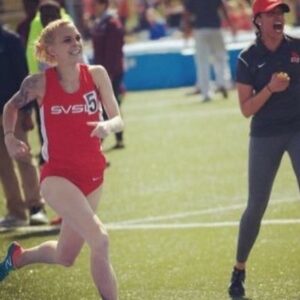
You introduced activacuity to your team in March 2016. What attracted you to using the app?
I’ve worked with Terry Chiplin on Active at Altitude camps for many years, and I trust his credibility and expertise in developing a tool to build self-esteem, mindfulness, and improve happiness for athletes. This is an extension of his personality and the experience he creates at all of his camps. I trusted that something he does so readily at each camp, he would be able to transform into a technological format because that’s his area of expertise—sports psychology. I was particularly attracted to the app after I had experienced recent failures with the team and needed to make some drastic changes to ensure such failures were not repeated. For the athletes who had performed phenomenally but just “not good enough” at conference during the indoor season, I wanted something to help them make the jump to the next level, mentally as well as physically.
What impact did using activacuity have on the team?
The athletes told me that they began to love visualization/meditation days because even if the run was only “meh” that day, they suddenly started to leave practice in a good place mentally. Many have lost loved ones to suicide, have seen how close friends’ lack of self-esteem eroded them, or how eating disorders distorted the psyche of high school friends. Activacuity sessions helped to build further rapport between athlete and coach, and opened up conversations where the space may not have been created to talk about such things otherwise.
Sometimes we would talk about certain topics afterward in a round circle, discussing any negative thoughts or fears that have crept in. This gave the younger girls a chance to listen to the older members of the team and realize that these people, who they idolize and view as super accomplished, struggle with some of the same demons that they do! It created an openness for them to realize that everyone hears negative voices and it’s present at every level of the sport, but by doing this, we can practice disempowering the negative and actively empowering the positive.
The speaking circles enabled them to share experiences and images of themselves that they were proud of. They allowed them to re-tell it, relive it, and embed those experiences and images into their 90% repeated thoughts. If I can get a large chunk of their 90% repeated thoughts to be positive and empowering instead of negative, that’s an important achievement.
Some girls on the team have struggled with manic depression, anxiety, and other afflictions, and they actively state that when they know they get to relax and practice activacuity, they actually plan on feeling better. It provides hope in their day, and they feel like it becomes a tool they know they can count on to uplift them if they have a rough patch. Even the ones who haven’t experienced these issues said they anticipated relaxing and getting into a positive mindset. They looked forward to being able to share happy memories or moments they’re proud of in a way that wasn’t considered boastful but was simply being open with their teammates in a supportive and accepting space. Activacuity has provided that space, with their performances at the GLIAC conference championships [see previous positive running story] a testament to the positive impact the app has had on the team’s self-confidence and focus.
Terry provides positive coaching sessions for clients, working with athletes to enable a positive focus on their status and goals. He can also create personalized guided imagery sessions for clients, delivered as an mp3 audio file that you can listen to on multiple devices.
activacuity provides a daily dose of positive guided imagery or visualization sessions. Find out what you can do when you make that mind-body connection – check out our subscription options here.

